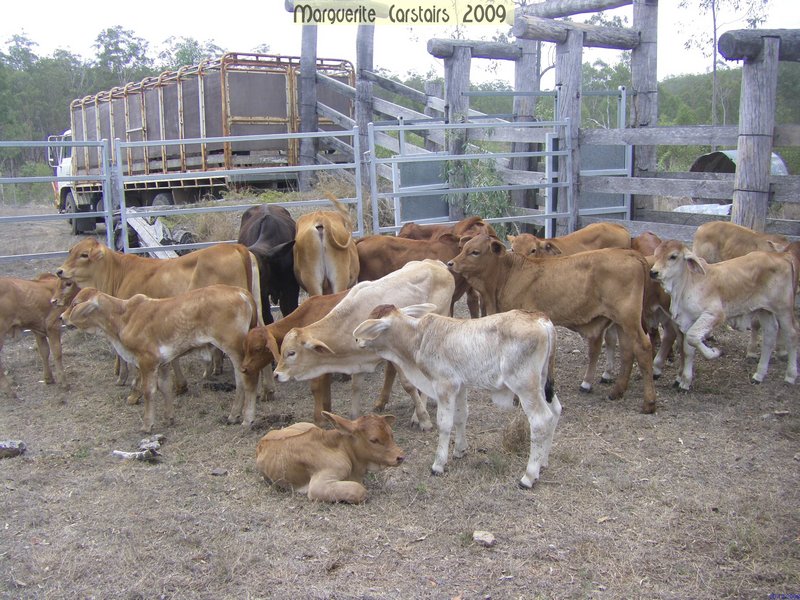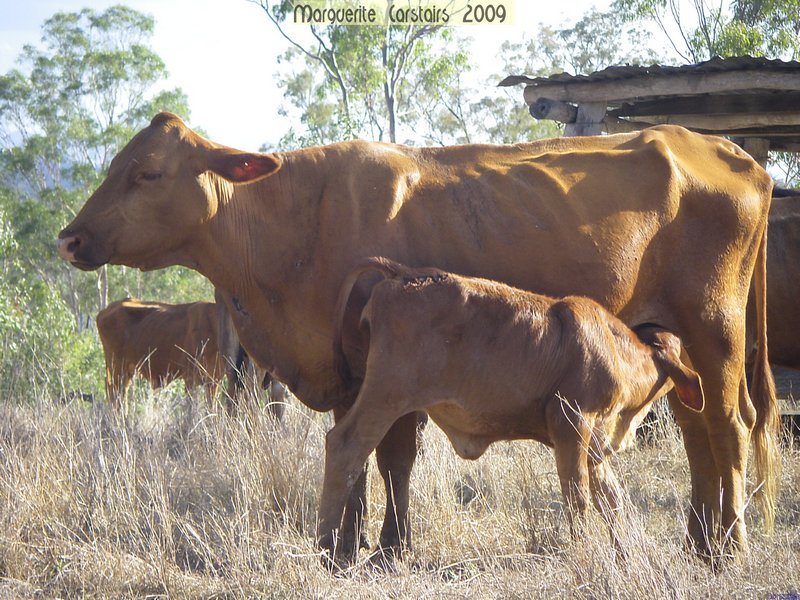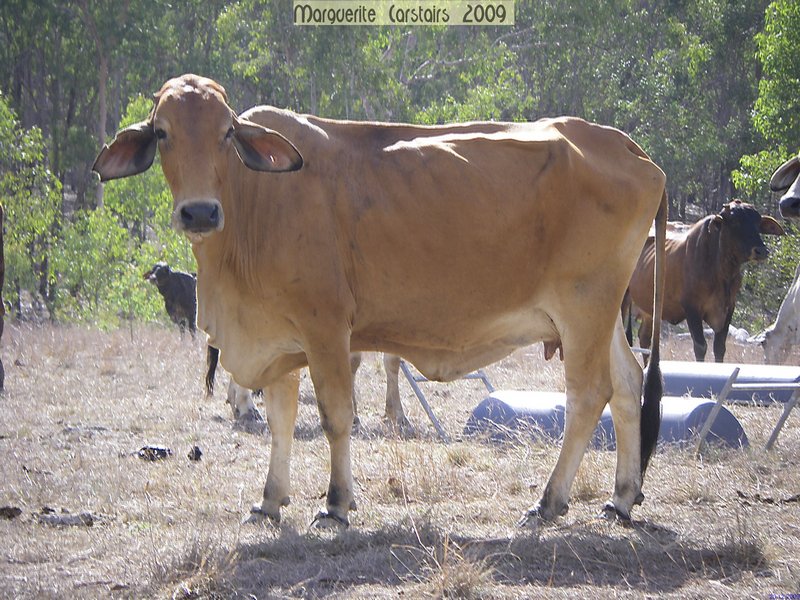The American Brahman has a distinct large hump over the top of the shoulder and neck, and a loose flap of skin (dewlap) hanging from the neck. Their ears are larger than Bos taurus breeds. Bulls weigh 1,600 to 2,200 pounds (800 to 1,100 kg) and cows weigh 1,000 to 1,400 pounds (500 to 700 kg). At birth, calves weigh 60 to 65 pounds (30 to 33 kg). American Brahmans are known as a docile, intelligent breed of beef cattle. Brahman cattle can be gray or red color. Their tail switch is black, and they have black pigmentation on their noses, tips of ears, and hooves. They are primarily a horned breed of cattle however there are some bloodlines of Brahman that are naturally polled (without horns).
Brahmans have a greater ability to withstand heat than European cattle. They have more sweat glands, and also an oily skin, thought to help repel pest insects along with a smooth coat. They have a short hair coat. They are also more resistant to parasites and disease. Brahmans have also been extensively crossbred with European cattle in subtropical United States, in Central America and in some tropical areas of the world to gain their advantages in hot climates. Brahman crossed cattle, referred to as F-1 Brahmans, are very popular in the southern 1/3 of the United States and in South America, Asia, and Australia because of the sub-tropical climate. An F-1 Brahman can be a cross between any two unrelated breeds, however it is most popular when crossed with Hereford and Angus.
A Brahman cow is an extremely good mother, offering protection and an abundance of milk for her calves. Brahman calves tend to measure high weights at weaning because of the outstanding milk given by Brahman cows. In some countries, especially South America, Brahman cattle are used for both milk and beef production.












140x45.jpg)


